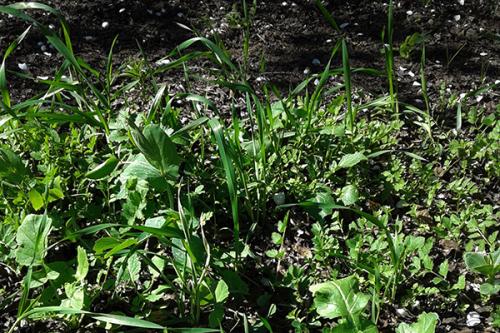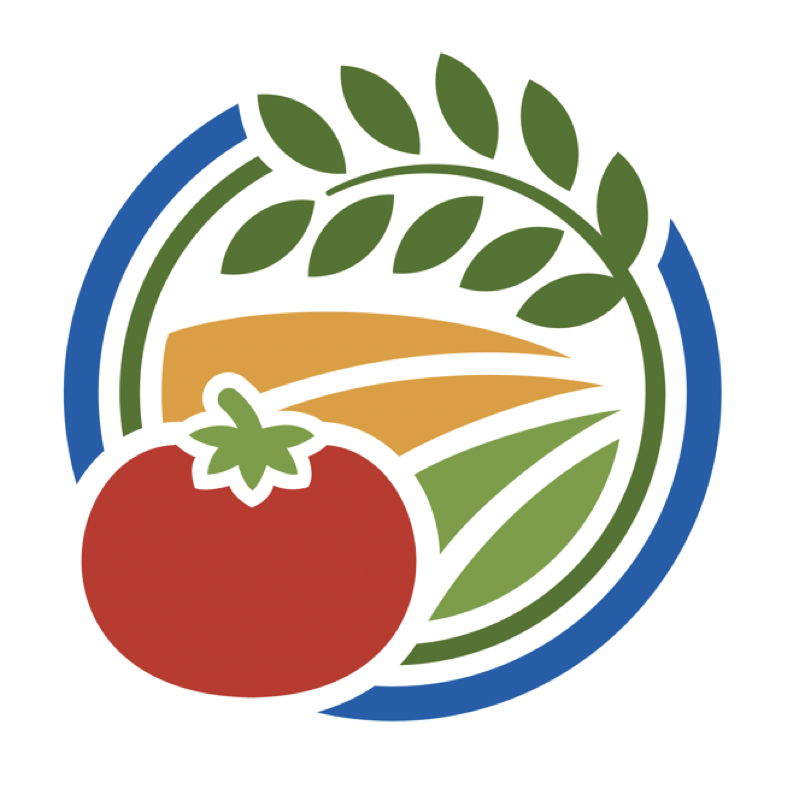
Farm Information
County: Yolo
Location: Woodland
Slope: Flat
Irrigation system: Solid set sprinklers
Soil type: Clay loam
Soil detail: Clay loam
Special farming challenges: Flooding, mites, soil cracking, expensive synthetic inputs
- Cropping Systems Information
- Crop: walnuts
Acres of orchard or vineyard: 6000Other crops: Almonds, pistachios, processing tomatoes, processing cucumbers, hybrid sunflower seed, alfalfa, other rotational grains and hay
Acres of other crops: 12000
Organic management: No
Certifications: Global GAP
Certifications notes: SCS global, Global Gap (almonds), Almond Lane brand
Where using cover crops: Walnuts, pistachios, almonds (some) - Grower Experience, Farm Priorities, and Cover Cropping Goals
- When started farming (yr): During high school
Farm priorities: n/a
Years growing orchard or vineyard crop: >10 years
Years growing cover crops: ~10 years (but more seriously for last 2 years; originally had cover crop on young orchards, moved away, tried a few different things along the way)
Initial transition to cover cropping: Started using cover crops to address specific problems, but moved into trying to manage cover crops for overall benefits. Had issues with heavy clay soil swelling and cracking, so planted triticale. Had success and started reading about multi-species blends and more benefits. "We started with cover crops in the middles of young orchards for soil health/drainage benefits. When the trees got to production age we would terminate the cover crops because we did not know how to handle the residue left on the ground. After a few years without cover crops our soil health was diminishing so we started experimenting more in our mature orchards. We saw the benefits right away and started to figure out how to deal with some of the issues that we had pre-conceived concerns about. We currently cover crop 100% of our walnut acreage, 100% of pistachio acreage, and approximately 50% of our almond acreage. In the last 3 years we started fall planting cover crops on our row crop ground. We went from a 30 acre trial to over 1000 acres planted and worked into the ground before transplanting processing tomatoes or direct seeding pickling cucumbers.
Goals and benefits: Soil improvement, water infiltration/retention, improved orchard floor for harvest, insect predator support, pollinator support, nitrogen supplement
Benefits description: Soil health, pollination, pest control. Lots of growers worry about potential harvest challenges with residue but has actually found green matter residue easy to deal with and better than dirt, especially in areas with poor/cracking soils
Change in goals over time: In young orchards, there were cover crops for soil health (predated interviewee). Took them out for harvest purposes. Then stopped doing it with new orchards (except one clover attempt). Later we started using a systems approach after realizing that there were many benefits and that many common production problems could be overcome with consistent cover cropping.
Reasons: Added multi-species mixes as saw overall benefits (pollinators, beneficial insects, weed control, improved infiltration and erosion control). Brassicas in walnuts for more flowering, not in pistachios due to lygus bug concerns - Cover Crop Details, Planting and Management Methods
-
Block described here: Walnuts
Current cover crops: Legumes, grasses, brassicas
Species and mixes: Mulit-species mix: 3 grains (oats, wheat, barley), pea, vetch, bell beans. Adds brassica blend in walnuts for more flowering in-season.
Planting method: Drill seed
Planting date (2020): After harvest (usually Oct - Dec)
Was that optimal? Yes. If too early the soil is too dry and hard for effective planting. Too late and the days are too cold and too short for establishment.
Pre-plant soil prep: Usually just a light irrigation first, or wait until a rainfall. Then no-till drill the seed into moisture. Occasional use of Perfecta to eliminate weeds, light disc if necessary
Planting equipment: No-till drill when planting into established residue. Has a planter with 2 hoppers, places brassicas in separate hopper.
Seeding rate: 35-50 lbs/acre
Seeding depth: 1/2 - 1 inch
Did it germinate well? Yes, even with low rainfall
Additional management and advice: In other years may rotary mow or roll/crimp first in late winter/early spring to about 6-8 inches. Sometimes is necessary for operations, either to stack prunings and get the shredder in every other row or to apply fertilizer, irrigate, etc. - Cover Crop Termination Methods and Biomass Management
-
Termination method: Mow, roller crimper
Termination equipment and process: Flail mower, rear-mount 12 ft or 15 ft rotary mower, custom-made roller crimper
Termination date: Around April 1st. Usually mow back the cover, then it grows back smaller and terminates after reaching maturity.
Was it optimal? Optimal timing depends on the amount of biomass produced, and amount of spring rainfall and soil moisture.
Biomass management: Leave in place to trap moisture and suppress weeds. It also helps with windrowing nuts on rough or cracked ground. - Cover Cropping Challenges and Strategies to Address Them
- Challenges: Orchard floor residue at harvest
Challenges description: Lots of growers worry about potential harvest challenges with residue but he has actually found green matter residue easy to deal with and better than dirt, especially in areas with poor/cracking soils
Strategies to address challenges: Try to plant a mix of species that will break down easily, especially legumes. Keep the amount of grasses in the mixes to a minimum.
Was the cover crop worth it? Yes, we see many benefits to cover cropping with very minimal expense.
Least successful past cover crops: Clover - tried one year in a young orchard but not good establishment with little rainfall
